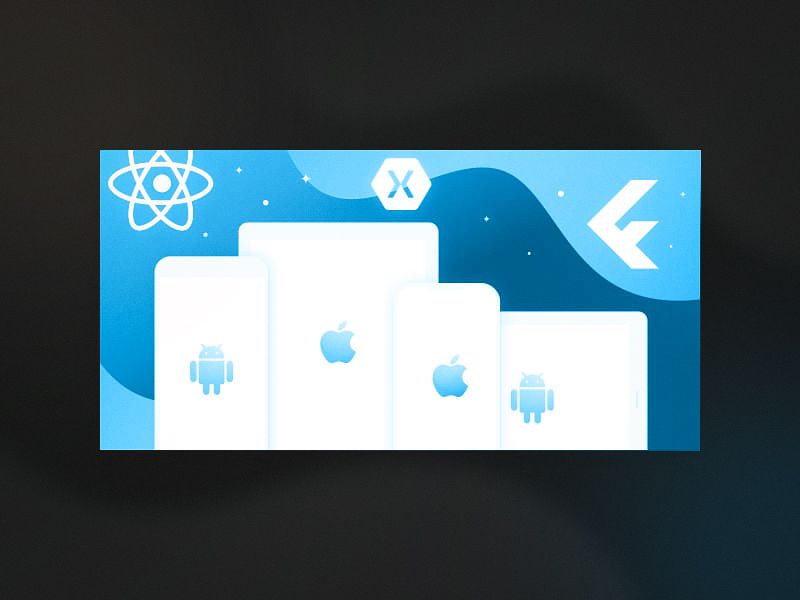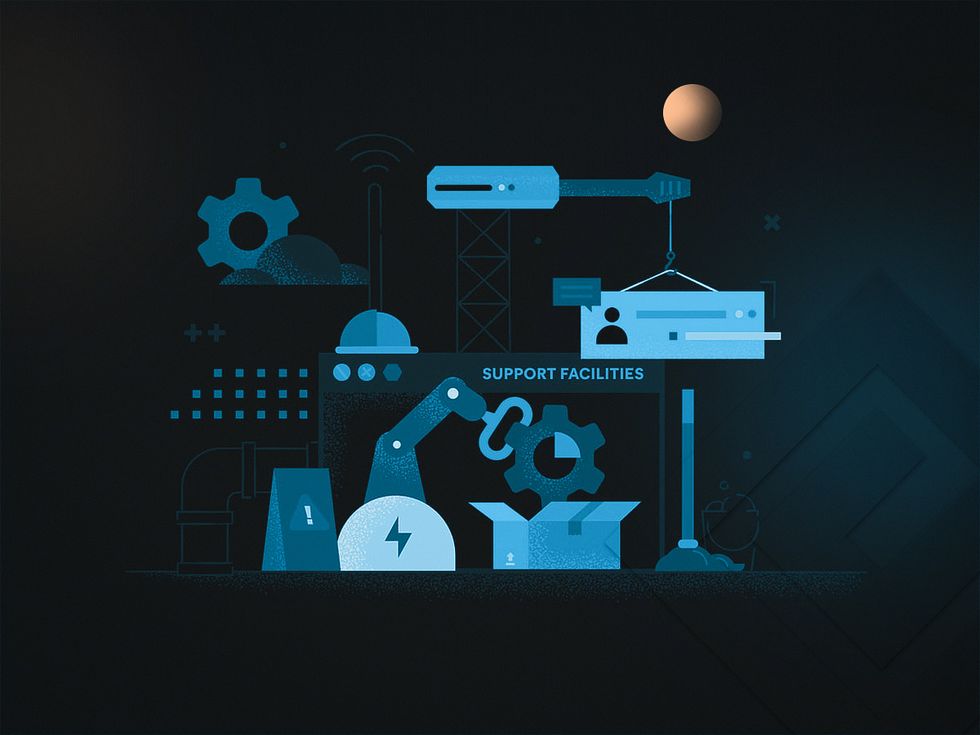
Key Takeaways
- Defining and locking down technical requirements early prevents costly rework, as every feature added later can inflate both timeline and budget.
- Drag‑and‑drop platforms can shave weeks off development by providing pre‑built components, which reduce software development cost.
- Building natively for one platform before expanding, or opting for cross‑platform frameworks, keeps initial costs down while still reaching your key audience.
- Budgeting for post‑launch support prevents technical debt from turning into emergency expenses.
A well-functioning software application expands the opportunities to gain a foothold in the market, meet the target audience’s needs, and stand out from the competition. Whether a large enterprise or a promising startup, software cost reduction should be part of your strategy upfront.
The cost of building a product varies due to the app’s complexity, implemented features, chosen platform, backend development, UI/UX design, etc. Each additional feature complicates the task, expanding the timeline and increasing the budget.
Challenges do not stop after calculating the approximate price and determining your budget. And the next question is how to reduce product development costs but without sacrificing quality?
In this post, we will give you five useful tips on how to reduce software development costs without compromising quality. Using Acropolium’s 20+ years of developing custom software and our team’s insider understanding of the topic, we will guide you through the ins and outs of cost-effective software.
What Drives Software Development Costs?

The average large IT projects run 50% over budget. There are several reasons for this, including both objective factors and pitfalls that can be difficult to predict.
When creating your digital product, every mistake can lead to additional costs and inflate the budget. Before finding a way to save software development budget, let’s determine which factors impact the price tag most.
Technical Requirements
The type of your app has a huge impact on the development cost. Apps differ in services they provide and functions they include. A simple basic app takes much less time to develop, and, accordingly, the price is lower. In contrast, an advanced one with a full set of complex features and AI integrations or blockchain protocols will be significantly more costly due to the expanded timeline.
Select the approximate number of required functions during the planning stage. Each element you decide to add later will increase costs. In most cases, developing an MVP first is the right solution not only for startups. It gives you a chance to test your app and reduce spending at the very beginning of development. You can add more sophisticated functions later.
Platform Choice
The choice of platforms for your app has a major impact on its cost. There are two main approaches you will consider. Making it native will let your app work on a single platform. Many developers prefer this approach because it lets them focus on the environment and adopt the app to all its requirements.
A native app has more advanced functionality and fully uses its capabilities. Note that the cost of developing an app for both iOS and Android is always the most expensive option. The cross-platform approach is another popular solution since it is cheap and takes less time to develop. But a cross-platform application may not function at full capacity.
So it’s highly recommended to start with one platform initially and create the other one later if necessary.
UI/UX Design
Even when developing an MVP, the software’s functional and user-oriented quality plays a vital role. You should test User Experience resistance throughout the development lifecycle.
But, you may not attach too much importance to animation, graphics, and other UI elements initially. Interface design is essential for distinguishing your product from competitors and defining your brand identity. Still, it becomes a priority at later stages of development.
Tech Stack & Tooling
The choice of technology stack and development tools has a direct impact on cost optimization in software development. Some programming languages, frameworks, and third-party services require more specialized expertise, which can raise hourly rates and limit the talent pool.
Additionally, newer or less widely adopted tools may lead to longer development times due to a lack of documentation or community support. On the other hand, selecting a mature, well-supported tech stack can speed up development and reduce the risk of costly rework later on.
Licensing fees for certain tools or platforms should also be factored into the budget from the start.
Development Team Model
Software development cost majorly depends on the team’s location and type. In-house shops are often several times more expensive than outsourced ones. Your primary goal is to find a dedicated team offering affordable services.
The other important condition is to find the team which may propose a full range of services, including app maintenance. If you need your collaboration to be long-lasting and developers aware of your product’s needs, don’t dwell on temporary options. Instead, you can always try custom development as a service, where you subscribe to success with transparent costs.
Project Scope & Communication
A well-defined project scope is essential for smooth development. Without it, issues can arise at any stage: missed deadlines, budget overruns, or mismatched expectations. These problems often trace back to poor planning or unclear communication from the start. Incomplete or overly specialized teams can add complexity, especially when working with independent contractors.
Just as important is maintaining consistent communication throughout the process. Even minor misunderstandings can lead to costly mistakes if they aren’t addressed early. Delays, added costs, and frustration are often the result of poor communication rather than technical issues.
Post-Launch Maintenance
You will continue your collaboration with the chosen team of developers even after launch. Costs spent on maintenance and adding more features to your app after its release may seem like a long-term prospect, but you should still consider them for further software cost reduction strategies.
The further expenses may not be so large, but regular investments in your product’s technical support are crucial if you want it to keep evolving and improving.
Common Pitfalls That Increase Development Costs

Even well-planned initiatives can go off track if certain risks aren’t addressed early on. From vague requirements and miscommunication to overlooked maintenance, these issues tend to surface in almost every stage of development.
Understanding where things typically go wrong helps teams make better decisions, stay on schedule, and avoid wasting resources. Below are some of the most frequent pitfalls that lead to cost overruns, and how they can be mitigated.
Unclear or Changing Requirements
One of the biggest reasons software projects go over budget is the lack of clearly defined requirements from the start. When goals, features, or business priorities shift mid-development, teams are forced to rework code, change direction, or scrap features entirely. This rework eats into the timeline and increases labor costs.
The more often these changes occur, the harder it becomes to deliver a product on time and within budget, lowering any chances for software cost reduction.
Poor Communication
Weak communication between stakeholders and the development team can quietly derail a project. Misunderstandings about functionality, delays in feedback, or assumptions about responsibilities often result in rework, duplicated efforts, or missed deadlines. When communication is irregular or unclear, problems tend to surface later—when they’re more expensive to fix.
Scope Creep
Scope creep refers to the gradual addition of new features or changes that weren’t part of the original plan. While some adjustments are normal, unchecked additions without proper reassessment of budget and time can exhaust resources quickly.
The rule of cost optimization in software development says that even small changes, when frequent, can lead to major overruns and delivery delays.
Inadequate Testing and QA
Skipping or minimizing the testing phase to save time often leads to the opposite outcome. Bugs discovered late in development or after launch can require significant resources to fix. Thorough testing and QA throughout the development cycle help prevent costly issues from slipping through and affecting usability, performance, or security.
Ignoring Post-Launch Maintenance
Many teams underestimate the importance of budgeting for post-launch support. Software requires continuous updates, bug fixes, and system improvements to stay secure and functional. When this isn’t planned for, issues pile up, technical debt grows, and urgent fixes can become unexpectedly expensive. Factoring in ongoing maintenance from the beginning helps avoid costly disruptions down the line.
Strategies to Reduce Software Development Costs Without Sacrificing Quality

Now, having learned what affects development prices, let’s uncover ways to keep your budget within reasonable limits. Some of the spendings seem to be inevitable, and they actually are. But if planned and managed wisely, every production stage can be more meaningful, less risky, and cost-efficient.
Our tips on how to optimize the cost of software development are aimed at avoiding unnecessary spendings, not at saving by any means. We still keep in mind that the main goal is your app’s good quality.
Сonsider Outsourcing to Expert Developers
Hiring an outsourcing company makes development less costly since you won’t have to hire a whole staff to provide you with in-house services. Working with an onshore team, you will be supposed to spend extra on taxes, individual employees’ salaries, rent, and more. Besides, you will regularly waste time on unnecessary meetings.
By outsourcing your app’s development, the chances to reduce software development costs without compromising quality will grow significantly.
Use a Cutting-edge Tech Stack
Choosing the right technology stack for your product’s backend and frontend development may not be easy as there are plenty of those, and each technology may offer some advantages.
A tech stack for server-side development consists of web frameworks, operating systems, databases, and programming languages. A frontend tech stack includes frameworks, UI libraries like Tailwind CSS, Radix UI, or Material UI. Progressive web apps (PWAs) and frameworks like Next.js or Nuxt are also commonly used for delivering high-performance, SEO-friendly interfaces. Choosing an appropriate technology will directly impact your software’s scalability, functionality, and server capability.
On the backend, modern choices often include Node.js, Go, Python, or Rust, paired with popular frameworks like NestJS, Django, FastAPI, or Spring Boot for enterprise-level applications. Databases range from PostgreSQL and MongoDB to distributed options like CockroachDB or Amazon Aurora, especially for projects with high availability needs.
The choice of tech stack directly influences your software’s ability to scale, integrate with cloud services, support AI-driven features, and handle real-time data.
Plan for Scalability
A scalable foundation allows you to respond to demand without constantly rebuilding or overextending your budget. Planning for scalability from the start is one of the most effective ways to reduce long-term development costs.
One proven technique is modular architecture. By designing your system in smaller, independent components (like microservices), you can scale specific features without affecting the whole platform. This approach simplifies updates and reduces downtime, which cuts both time and operational expenses.
Cloud infrastructure also plays a major role. Services like AWS, Google Cloud, and Azure allow you to scale resources up or down depending on usage. Instead of overpaying for unused capacity, you only pay for what you need, making growth more predictable and budget-friendly.
To reduce software development costs, low-code platforms are a practical option to consider. They speed up the process by using visual tools and pre-built components, which can help reduce development time and overall costs.
Start off with an MVP
If you build a fresh product and expect it to break into the market just after the launch, you still need to remember that it’s only the beginning of the journey. To shorten time to market and save your budget, build an MVP and consider adding only essential features first. Prioritize the key functions, show users the product’s benefits, and learn how they respond. In this matter, usability and clarity definitely prevail over visual and functional extras.
Keep in mind that you will have plenty of time to enrich the product with any desired features after your software release, and this will help you reduce development costs in the beginning.
Also, low-code is definitely worth a look, as it lets you put apps together faster using drag-and-drop tools instead of writing tons of code from scratch. That means less time, fewer developers, and lower overall costs.
Test Regularly
Mistakes are an inevitable part of any workflow, so it’s not likely that you or your team won’t make any. But you can detect issues and get rid of them faster than they manage to become a threat. How?
- Test everything as often as possible.
- Involve QAs as early as possible.
- Test the design requirements.
- Provide the code’s quality control.
Start working with QA specialists at the earliest phase and continue it throughout the whole period. It will help prevent many bugs, not letting them multiply and impact negatively or even critically.
Testing and quality control have a major impact on your product’s development cost. Not doing it regularly and on time, you risk getting stuck in the processes of redesign and constant alterations, resulting in additional expenses.
Consider Cross-Platform App Development
Cross-platform development is especially beneficial for MVPs, startups, and projects that need to reduce software development costs. If you invest in this type of development from scratch, it will help you reach a broader audience without doubling the workload.
Modern frameworks like Flutter, React Native, and Xamarin allow developers to share up to 90% of the codebase, while still delivering a native-like user experience.
It’s not always ideal for highly complex or performance-intensive apps, but for most business applications, it strikes a strong balance between efficiency, quality, and scalability.
Regional Cost Differences & Pricing Insights
In-house development solutions are much more expensive than outsourcing. In some cases, the total price of the service in the USA or Canada could be twice or even three times higher than the same set of services in South America, Europe, or Asia. To make sure, look at the comparison table with the average hourly rates of frontend developers in different regions.
| Region | Average hourly rates range |
|---|---|
| North America | $57-320 |
| South America | $34-85 |
| Western Europe | $43-150 |
| Eastern Europe | $35-80 |
| Southeast Asia | $19-60 |
Source: https://www.glassdoor.com
Choosing the Right Development Model
Last but not least, to reduce development costs you need to decide on the cooperation model and pricing model of your vendor. According to Deloitte, more than 78% of organizations are either exploring or have already embraced flexible staffing options like IT staff augmentation to enhance their workforce strategies.
Outsourcing specialists are often even more qualified than in-house ones. That’s because they are used to working with various types of projects and dealing with many different industries, gaining experience in providing more diverse and complex development services. In contrast, in-house developers are more likely to work on similar projects.
To scale your team quickly, you can outstaff through a third-party provider — this simplifies hiring, but the responsibility for delivery still falls on you. Freelancers are a more affordable option, though their lack of team support can be a drawback when fast, coordinated work is needed. If you’re looking for a reliable setup with built-in collaboration and faster decision-making, outsourcing to a dedicated company offers a more cohesive solution.
Here’s when to choose each development model:
- In-house is best for full control and long-term projects with a solid budget.
- Outsourcing suits clearly defined projects where you want to save costs and hand off management.
- Outstaffing works well when you need expert help fast but want to keep close control.
- Freelancers are ideal for small, simple tasks or tight budgets but less reliable for complex or urgent work.
Why Choose Acropolium?
If you need additional information about software development costs and quality, we at Acropolium are ready to come in handy. Our dedicated team has delivered hundreds of successful engineering solutions and will help you meet your deadlines and hit the target. Here’s how we help our clients reduce the cost of new product development:
- Our developers set up a consistent plan, define the goals, and stick to them.
- We will help you plan your budget and note the most significant factors that may affect it.
- The development team will choose the right BaaS, low-code or other solutions not to waste time and resources on backend development.
- We will pick a well-known tech stack that is future-proof and popular among developers.
- During the development, we first focus on the app’s usability.
- Involve QA specialists at the earliest development stages and regularly test the product.
Whether you need to build a cost-efficient product from scratch or you need to revamp your existing software, we offer legacy software modernization services that show the difference.
Final Thoughts
Software development is a challenging, timely, and expensive aim to reach. But it’s still possible to build a high-quality product without experiencing a budget crunch. It doesn’t mean that you have to look for any ways to save costs. Good planning, efficient project management, a dedicated developers’ team, and consistent solutions to any possible issues will do the trick.
At Acropolium, we provide a complete set of custom software development services for industries from. Our experienced specialists can consult you on any issues related to your product development strategy, tech stack selection, BaaS solutions, software audit & consulting, and more.
Get in touch to share with us your ideas and learn more about our subscription-based cooperation model!









![How to Build a Minimum Viable Product: [2025 Guide]](/img/articles/how-to-build-a-minimum-viable-product/img01.jpg)


![E-commerce App Development: [2025 Guide]](/img/articles/the-a-z-guide-to-e-commerce-app-development-benefits-features-and-cost/img01.jpg)
![How to Scale a Web Application [9 Best Ways] — Acropolium](/img/articles/how-to-scale-web-app/img01.jpg)
